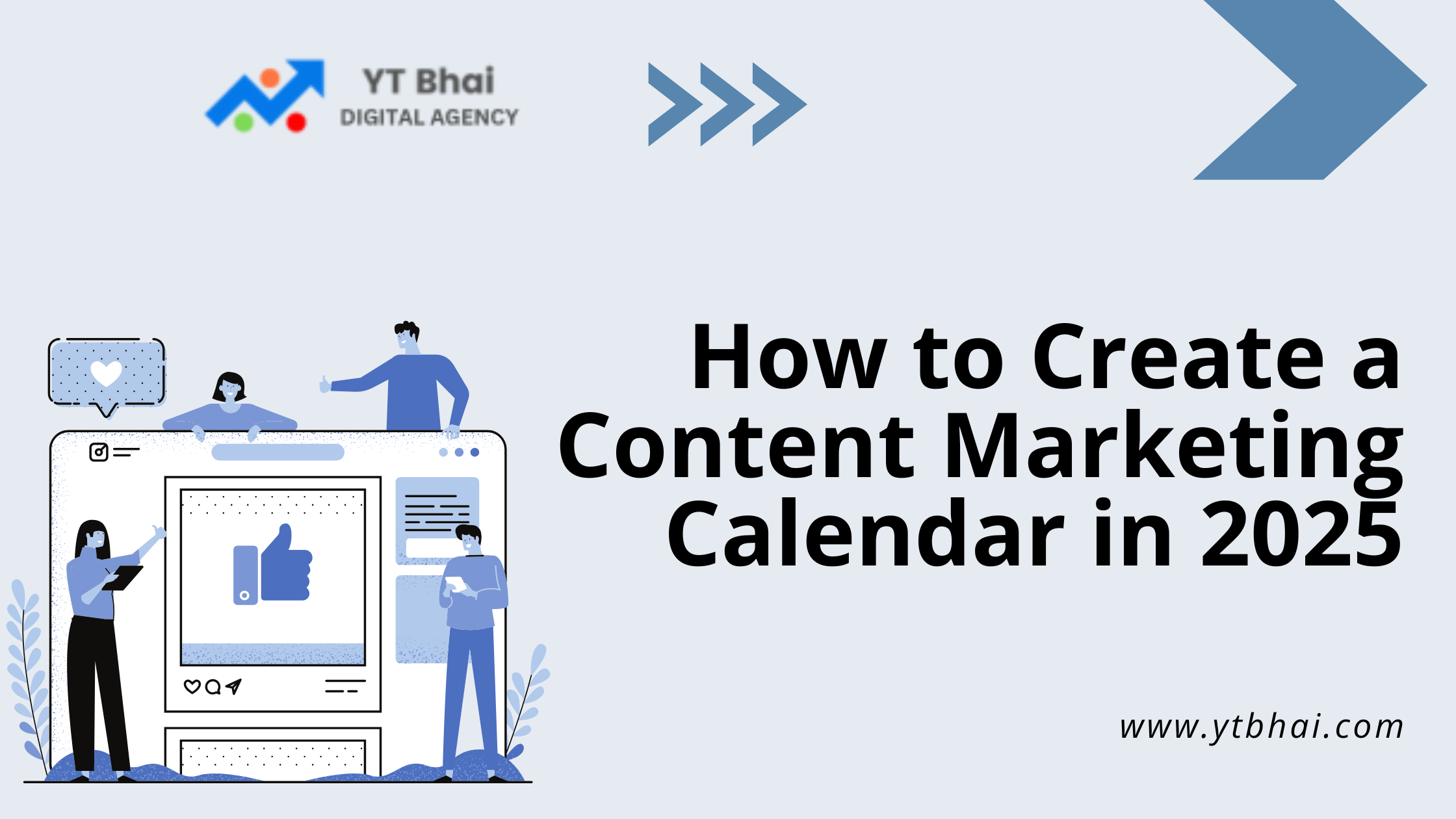
A well-structured content marketing calendar is the backbone of a successful content strategy. In 2025, the demand for consistent, high-quality, and engaging content is higher than ever. A content calendar ensures that your marketing efforts are organized, aligns with your business goals, and resonates with your target audience. In this guide, we’ll explore how to create an effective content marketing calendar for 2025, along with tips, tools, and examples to streamline your strategy.
Why Do You Need a Content Marketing Calendar?
- Organization: Keeps your team aligned and ensures deadlines are met.
- Consistency: Helps maintain a regular publishing schedule.
- Optimization: Allows for planning around trends, holidays, and events.
- Efficiency: Reduces last-minute scrambling for content ideas.
- Analytics: Enables tracking performance and adjusting strategies.
Step-by-Step Guide to Creating a Content Marketing Calendar
1. Define Your Goals
- What are you trying to achieve? Examples include increasing brand awareness, generating leads, or boosting sales.
- Use SMART goals (Specific, Measurable, Achievable, Relevant, Time-bound).
- Example Goal: “Increase website traffic by 25% in Q1 2025 through blog content.”
2. Understand Your Audience
- Create detailed buyer personas to identify your audience’s preferences.
- Use tools like Google Analytics, HubSpot, or Semrush to analyze audience behavior.
- Key Questions:
- What topics interest your audience?
- Which platforms do they prefer?
3. Audit Your Existing Content
- Evaluate past content performance to identify what worked and what didn’t.
- Tools like Google Analytics and Ahrefs can provide insights into high-performing pages and gaps.
4. Choose Your Content Types
- Popular formats include:
- Blog posts
- Infographics
- Videos
- Webinars
- Social media posts
- Align formats with your audience’s preferences.
5. Map Out Key Dates
- Include:
- Industry events
- Product launches
- Holidays
- Awareness days
- Use these dates to plan relevant, timely content.
| Month | Key Dates | Content Ideas |
|---|---|---|
| January 2025 | New Year’s Day (Jan 1) | “2025 Marketing Trends” blog post |
| February 2025 | Valentine’s Day (Feb 14) | Social campaign: “How to Show Brand Love” |
| March 2025 | Women’s History Month | Video: “Empowering Women in Marketing” |
6. Brainstorm Content Ideas
- Use keyword research tools like Semrush, AnswerThePublic, or Google Trends.
- Focus on evergreen and trending topics to balance your content.
7. Use a Content Calendar Tool
- Popular tools include:
- Trello: Visual task management with drag-and-drop boards.
- Asana: Assign tasks, set deadlines, and track progress.
- Google Sheets: A simple, customizable solution for smaller teams.
Sample Content Calendar Template
| Date | Content Type | Topic | Author | Status | Platform |
|---|---|---|---|---|---|
| Jan 3, 2025 | Blog Post | “2025 Digital Marketing Trends” | John Doe | Draft Completed | Website |
| Jan 10, 2025 | Social Post | “New Year Marketing Goals” | Jane Smith | Published | Instagram, LinkedIn |
| Feb 1, 2025 | Video | “Valentine’s Day Marketing Tips” | Sarah Lee | In Progress | YouTube |
8. Assign Responsibilities
- Define roles such as:
- Content creator
- Editor
- Graphic designer
- Social media manager
- Streamline collaboration using tools like Slack or ClickUp.
9. Schedule and Automate
- Use automation tools like Buffer, Hootsuite, or HubSpot to schedule content.
- Set reminders for content updates or republishing.
10. Measure and Adjust
- Regularly track content performance using metrics like:
- Engagement (likes, shares, comments)
- Website traffic
- Conversion rates
- Optimize your calendar based on analytics insights.
Pro Tips for an Effective Content Marketing Calendar
- Flexibility: Allow room for spontaneous content or breaking news.
- Repurposing: Use one piece of content across multiple platforms.
- Visual Content: Incorporate visuals like videos and infographics for higher engagement.
- SEO Optimization: Plan topics around high-volume keywords for better reach.
- Team Collaboration: Use tools that promote teamwork and accountability.
Common Mistakes to Avoid
- Overloading the Calendar: Avoid adding too many tasks, leading to burnout.
- Ignoring Analytics: Regular performance checks are crucial for success.
- Lack of Audience Focus: Always prioritize what resonates with your audience.
- Inconsistent Updates: Failing to update the calendar can disrupt workflow.
Conclusion
Creating a content marketing calendar in 2025 is essential for maintaining a consistent and impactful content strategy. By planning ahead, using the right tools, and staying aligned with your goals, you can create content that engages your audience and drives results. Remember, flexibility and regular performance reviews will ensure your calendar remains a valuable asset throughout the year.
FAQs
1. Why is a content marketing calendar important?
A calendar helps organize content efforts, maintain consistency, and align with business goals.
2. What tools are best for creating a content marketing calendar?
Trello, Asana, and Google Sheets are great tools, depending on team size and complexity.
3. How often should I update my content calendar?
Review and update it weekly or monthly to ensure accuracy and relevance.
4. Can small businesses benefit from a content marketing calendar?
Yes, even small businesses can achieve consistency and better ROI with a planned approach.
5. How do I measure the success of my content calendar?
Track metrics like engagement, website traffic, and conversion rates to assess performance.
